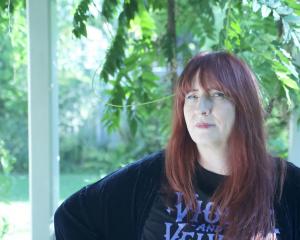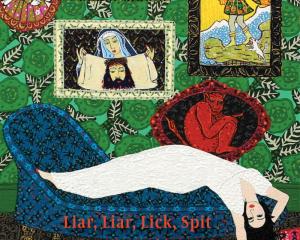
Nobel laureate Alice Munro was a Canadian literary giant who became one of the world’s most esteemed contemporary authors and one of history’s most honoured short story writers.
Often ranked with Anton Chekhov, John Cheever and a handful of other short story writers, Munro achieved stature rare for an art form traditionally placed beneath the novel.
She was the first lifelong Canadian to win the Nobel and the first recipient cited exclusively for short fiction.
Echoing the judgement of so many before, the Swedish academy pronounced her a "master of the contemporary short story" who could "accommodate the entire epic complexity of the novel in just a few short pages".
Munro, little known beyond Canada until her late 30s, also became one of the few short story writers to enjoy ongoing commercial success. Sales in North America alone exceeded 1 million copies and the Nobel announcement raised her then latest book Dear Life to the high end of The New York Times’ bestseller list for paperback fiction. Other popular collections by Munro included Too Much Happiness, The View from Castle Rock and The Love of a Good Woman.
Munro’s daughter, Sheila Munro, wrote a memoir of her own childhood in which she confided that "so unassailable is the truth of her fiction that sometimes I even feel as though I’m living inside an Alice Munro story".
Fellow Canadian author Margaret Atwood called her a pioneer for women, and for Canadians.

"The road to the Nobel wasn’t an easy one for Munro: the odds that a literary star would emerge from her time and place would once have been zero."
Munro was a farmer’s daughter who married young, then left her husband in the 1970s and took to "wearing miniskirts and prancing around", as she recalled during a 2003 interview with the Associated Press.
Many of her stories contrasted the generation of Munro’s parents with the more open-ended lives of their children, departing from the years when housewives daydreamed "between the walls that the husband was paying for".
Alice Ann Laidlaw was born in Wingham, Ontario, in 1931, and spent much of her childhood there, a time and place she often used in her fiction. Her father was a fox farmer, her mother a teacher and the family’s fortunes shifted between middle class and working poor, giving the future author a special sensitivity to money and class.
A top student in high school, she received a scholarship to study at the University of Western Ontario, majoring in journalism as a "cover-up" for her pursuit of literature. She was still an undergraduate when she sold a story about a lonely teacher, The Dimensions of a Shadow, to CBC Radio. She was also publishing work in her school’s literary journal.
One fellow student read Dimensions and wrote to the then-Laidlaw, telling her the story reminded him of Chekhov. The student, Gerald Fremlin, would become her second husband. Another fellow student, James Munro, was her first husband. They married in 1951, when she was only 20, and had four children, one of whom died soon after birth.
Settling with her family in British Columbia, Alice Munro wrote between trips to school, housework and helping her husband at the bookstore that they co-owned and would turn up in some of her stories. She wrote one book in the laundry room of her house, her typewriter placed near the washer and dryer.
By the early ’70s, she had left her husband, later observing that she was not "prepared to be a submissive wife".
Her changing life was best illustrated by her response to the annual Canadian census. For years, she had written down her occupation as "housewife". In 1971, she switched to "writer".
Over the next 40 years, her reputation and readership only grew, with many of her stories first appearing in The New Yorker.
Munro received the Man Booker International Prize in 2009 for her lifetime body of work. She was also a three-time winner of Canada’s Governor General’s Award for Fiction and recipient of the US National Book Critics Circle award.
Munro had been in frail health for years and retired from writing in 2013. She died on May 13 aged 92.
- Agencies












